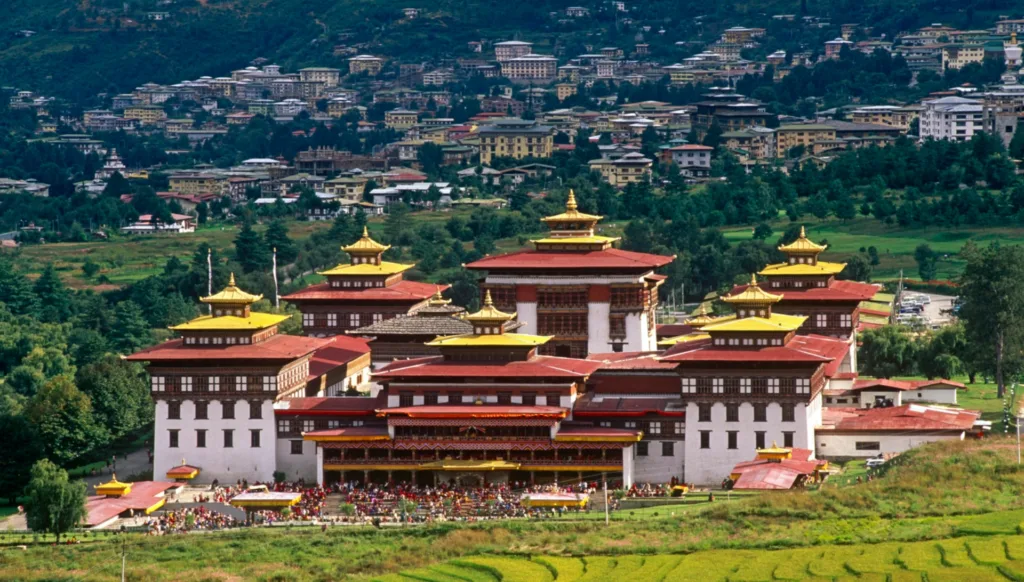Table of Contents
Introduction:
(Bhutan)Nestled in the eastern Himalayas, Bhutan, often referred to as the “Land of the Thunder Dragon,” is a mystical and breathtaking destination that seamlessly blends tradition and modernity. This tiny kingdom, sandwiched between India and China, is renowned for its pristine landscapes, vibrant culture, and a commitment to Gross National Happiness. In this travel blog, we’ll delve into the rich history, captivating attractions, and essential travel tips for an unforgettable journey to Bhutan.
History of Bhutan:
Bhutan’s history is steeped in mythology and spirituality. The country was unified in the 17th century by Zhabdrung Ngawang Namgyal, a charismatic leader who established the dual system of government, combining theocracy with monarchy. Bhutan has maintained its independence throughout its history, resisting colonization and external influences. The monarchy, with its revered Wangchuck dynasty, continues to play a crucial role in Bhutan’s identity and governance.
Places to Visit in Bhutan:
Paro Taktsang (Tiger’s Nest):
No visit to Bhutan is complete without experiencing the awe-inspiring Paro Taktsang. Clinging to the side of a sheer cliff, this sacred monastery is a testament to both architectural marvel and spiritual significance. Legend has it that Guru Rinpoche flew to this location on the back of a tigress, meditating in a cave that became the heart of Taktsang. The trek to the monastery offers panoramic views of the Paro Valley and is a pilgrimage for both locals and visitors.

Thimphu:
The capital city, Thimphu, is a blend of tradition and modernity. Visit the Tashichho Dzong, a stunning fortress that serves as the seat of Bhutan’s government. Explore the lively weekend market, where locals and nomads gather to trade goods. Don’t miss the National Memorial Chorten, a stupa dedicated to world peace and prosperity.
Punakha Dzong:
Situated at the confluence of the Pho Chhu and Mo Chhu rivers, Punakha Dzong is a masterpiece of Bhutanese architecture. Known as the “Palace of Great Happiness,” this fortress played a vital role in Bhutan’s history and serves as the winter residence of the Central Monk Body.

Weather:
Bhutan’s climate varies with altitude. The southern regions experience a subtropical climate, while the central valleys have a temperate climate. Higher altitudes, including Thimphu and Paro, can get quite cold, especially in winter. The best time to visit Bhutan is during the spring (March to May) and autumn (September to November) when the weather is mild, and the landscapes come alive with blooming flowers or vibrant autumn colors.
Best Time to Visit Bhutan:
Choosing the right time to visit Bhutan is crucial for a memorable experience. While spring and autumn are generally recommended, each season has its unique charm. Spring offers pleasant weather and vibrant flora, making it an ideal time for trekking. Autumn, on the other hand, provides clear skies, perfect for capturing the stunning mountain vistas.
Transport:
Bhutan’s unique approach to tourism involves a daily tariff that covers accommodation, meals, transportation, and a guide. Travelers can fly into Paro International Airport, the country’s sole international airport. Within Bhutan, roads wind through picturesque landscapes, but travel times can be lengthy due to the challenging terrain.
Conclusion:
Bhutan is more than just a travel destination; it’s an invitation to explore a way of life deeply rooted in tradition and spirituality. From the dizzying heights of Paro Taktsang to the serene valleys of Punakha, Bhutan captivates the soul and offers an escape into a world where happiness is paramount. As you embark on this journey, let the Land of the Thunder Dragon enchant you with its beauty, culture, and the timeless spirit of Bhutanese hospitality.







